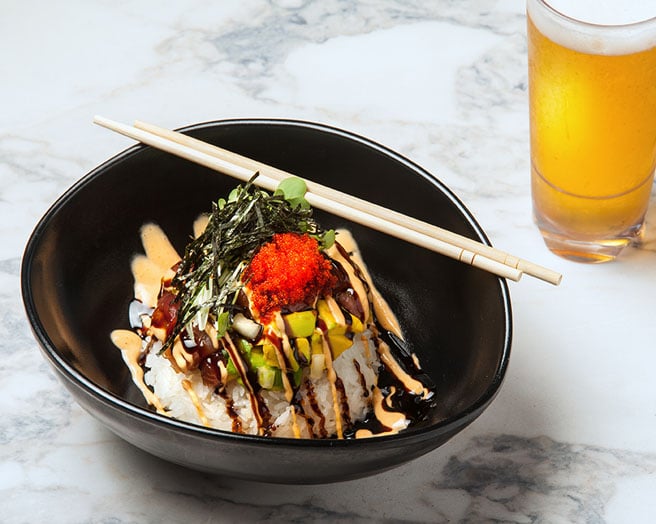Natural Adornments
For thousands of years, Hawaiians have adorned themselves with materials sourced from nature. Whether serving as decoration or used to communicate status, these natural adornments have played a significant role in Hawaiian culture. Many of these objects are still popular to this day, tying together generations of those who adorn themselves with nature.
Lauhala
Symbolic of the connections between people, lauhala products are created by weaving leaves of the hala (Pandanus tectorius) tree. So intertwined with the history of the Hawaiian people, lauhala sails even brought the Polynesians to the islands when they settled the Hawaiian chain between 1,000 – 1,200 A.D. Today, you can find lauhala in many forms – woven into hats, wrapped around bangles, crafted into bags and as mats like the ones Hawaiians used thousands of years ago.
When buying a lauhala product, it is recommended that you smell the item to make sure the product is free of any musty smells. To store a lauhala product, you will want to choose a cool, dry place without any direct sunlight and cover the lauhala product thoroughly because dust can easily settle in its folds. It is also recommended that you inspect your lauhala piece between wears snipping away fraying edges as they appear. If not snipped away, these frays can continue to erode the structure of the lauhala product.
Ni‘ihau Shells
Cherished as one of the most prized shells in the world, Ni‘ihau shell products are created by the painstaking stringing of tiny shells collected on The Forbidden Island of Ni‘ihau. The art of creating lei, necklaces, earrings and bracelets from these tiny shells is an art form taught between generations of families and for hundreds of years, ali‘i (chiefesses) could be seen wearing multiple-strand necklaces crafted from these diminutive shells.
Lei is the most popular product featuring these shells, which can take years to complete just one. To be considered a true Ni‘ihau shell lei, all the shells must be collected on the island of Ni‘ihau, and the lei must be crafted in Hawai‘i. There are three types of shells allowed in the mix –laiki shells, also known as rice shells for their resemblance to grains of uncooked rice; momi shells, which are slightly smaller than the laiki shells and oval in shape; and the kahelelani, the tiniest and most prized of all Ni‘ihau shells. Measuring just larger than a pin head, kahelelani shells have a gentle dome and come in a variety of colors from ‘ākala (a rosy pink) to the ke‘oke‘o (a delicate white color).
When shopping for a Ni‘ihau shell lei, look for balance within the design and consistency of the shells. Since the shells are made from calcium carbonate, they are sensitive to all chemicals, and it is recommended you do not get makeup or perfume on your shells. To clean a Ni‘ihau shell lei, it is recommended you gently wipe the lei with a 100% cotton cloth and store it in a box or jewelry case.
Tahitian Pearls
Also known as black pearls, these stunning organic gems grow within black lip oysters in French Polynesia. Ranging from white to black in base color, Tahitian pearls feature stunning undertones in colors of pink, blue, silver or peacock green. Developing in round, semi-round, teardrop and baroque shapes, Tahitian pearls are typically strung together as stunning necklaces and used as a striking addition to rings or earrings.
Once you bring your Tahitian pearl jewelry home, there are care notes to be aware of. When wearing your Tahitian pearls, it is recommended to treat the pieces of jewelry as “final touches” worn after hair and makeup are completed to avoid getting chemicals on the pearls. If you tend to have dry skin and don’t wear your pearls often, a small amount of olive oil or coconut oil can be used to hydrate and shine them. After wearing a Tahitian pearl, it is recommended to gently wipe the piece with a dry cotton cloth or clean sea water and pat dry, being mindful to never use an ultrasonic cleaner, steamer or brush. When storing jewelry crafted from Tahitian pearls, it is recommended to store pieces in a case or pouch to avoid scratches and avoid dry or hot environments.
A couple local options when looking for Tahitian pearl jewelery on the Kohala Coast are Hildgund Jewelers and Maui Divers Jewelry.
Kukui Nuts
The nuts from the kukui tree, one of the canoe plants brought to Hawai‘i by the original Polynesian voyagers, represent enlightenment, protection and peace. This multipurpose nut was vital to life in Hawai‘i. The meat within the nut was roasted and used as an ingredient in traditional poke, the oil was harvested to light lanterns and the remaining shell was used as decorative embellishment for hula dancers, kahuna (priests) and ali‘i.
Once the nut was cleaned out, the exterior was sanded, buffed and polished. After preparation, the kukui nuts were strung to create shiny lei or bracelets used either as ceremonial garb or as a pure ornament. Today, kukui nut lei are available in many stores and lei shops and are often given at times of celebration. This low-maintenance lei will last for years if given the proper care of a gentle wipe down after wear with a cotton cloth.
Whether blocking the strength of the sun with a wide-brimmed lauhala hat or adorning their necks with the delicate shells of Ni‘ihau, Hawaiians adeptly adorned their bodies with materials from nature. Thankfully, these traditions have been passed down from generation to generation allowing us to continue to enjoy the natural adornments as people of the past did.








